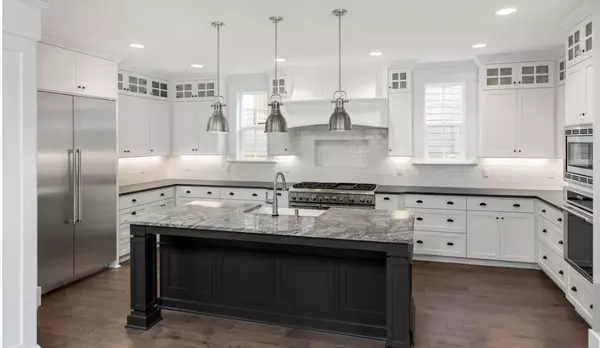
How to Plan a Successful Renovation
Taking on a home renovation project can be terribly overwhelming, even for seasoned veterans. With HGTV shows, family blogs and curated Instagram feeds creating the illusion that it will be a fun bonding experience with your spouse, it’s no wonder that so many are buying fixer-uppers. It’s a commendable choice to renovate an old home, but you’ll need to have a good plan on paper before you ever touch a single tool. Do your homework. Don’t go in blind. Before you hire a contractor, it’s important to conduct as much research as you can—and not just by Googling or swooning over Pinterest boards. Find out what your local contractors’ portfolios look like, ask them about their experience and call their references. Many design professionals play the smoke and mirrors game online to sway potential clients, but a positive, long-standing reputation in your community speaks for itself. Establish a budget. Penny-pitching homeowners can boast about how much they saved during the renovation process by cutting costs wherever they could, but even the most experienced DIYers are likely to run into issues they didn’t expect. This is why most design professionals recommend that their clients figure out a realistic budget ahead of time. But be aware that almost every renovation ends up costing more than you want it to. Choose a dream team. Renovation and design projects often go hand in hand, and for that reason, plenty of husband-and-wife duos are starting construction and design businesses. If you can find your own local Chip and Joanna Gaines, you’re in luck. Otherwise, you’ll have to scout out a contractor and a designer separately, and figure out how well they work together to make your dream home a reality. If you’ve found a designer you’re excited about, you can also ask them if they have a contractor they prefer to work with. That can help ensure you have the strongest team possible in place. Figure out whether you need an architect’s help. Depending on the scale of your renovation project, you may need more than a contractor. Entire additions—for example, a sunroom, an extra bedroom or a screened-in porch—to your home are unlikely to be manageable by a team of construction workers alone. If you need to get in touch with an architect, figure out who in your area is available and capable of providing you with the best service possible.

Tips for Choosing the Perfect Shade of White Paint
White. The colour of freshness. The colour of starkness. But, apparently, not all white colours are the same. There are different shades and nuances, and when choosing the right tone for interiors, you might find it helpful to know what to look for. Get a picture. Before you decide on the exact shade, have a good look around the room you want to paint. What’s in the room? If you have neutral-coloured furnishings, you might do better with a warmer shade, while a cool shade melds well with lots of colour. Style. Ascertaining the overall style of your home may also help you to pick your finest white. If your home has a more modern feeling to it, a pure white would stay in line with a contemporary theme. White tinged with colour is more traditional. Whites and light. How much natural light floods the room also plays a part in colour choice. Pure white looks great in a room swathed with lots of natural light. Meanwhile, if a room doesn’t have a lot of windows, you might want to consider adding subtle tinges of colour to the white on the walls and go for pure white on the trim. Location. If you’re in areas where the climate is grayer—like the West Coast—a gray undertone in white paint will complement the quality of light. In other areas of Canada where the sky is clearer, that same colour could take on a pinkish hue because of the blue light from the sky. In this case, chips are your friend. If you’re undecided, take some paint chips from the store of each colour you’re thinking of using and place them on different parts of the wall. You might be surprised at how light affects the colours. You might find one is too cool or warm for your taste. Doing this before you actually buy the paint is a wise move. The swatch test. If you still can’t decide, you might opt for getting a couple of sample cans and actually painting swatches in the room. Check back to see how the colour changes throughout the day and into the evening. If you can’t make up your mind as to whether a cool or warm tone would be better, choose something in the middle. Splitting the difference may be something you’ll be happy with in the long run if you’re indecisive.

5 Ways to Embrace Minimalism Today
While some might think of minimalism as a trend, it’s likely one that’s not going away anytime soon. Living with less is not only better on your pocketbook, it’s better for your mental clarity and overall happiness. Here’s how to get started: Start today. Sometimes we hear of an idea that sounds great, but leave it for another day when there is less on our plates. The best way to get started with something you know will have a positive overall impact on your life is to just do it. Right now—before you have time to talk yourself out of it and make excuses. Clear out and organize a cluttered part of one room—a small closet or maybe your desk. This small step will get you started and motivate you to keep going. Know it will get worse before it gets better. When it comes to decluttering, the thing that tends to scare people away is dealing with the in-between period—where your stuff is out of hiding and all over your living room floor. Just thinking about that image might give you anxiety, but don’t let it stop you from proceeding. That period is temporary, and when you get through the piles of stuff and realize just how many items you’ve held onto that you never use, you’ll feel happy for having finally done the work to lighten the load. Ask the important questions: Does it bring me joy? Does it serve a purpose in my life that another item doesn’t already serve? If keeping it, where does it live? These three questions are all you need to decide if something is worth keeping, donating or throwing out. Think before you buy. While it’s easy to mindlessly buy something just because the price is right, that doesn’t mean you should. With your new lifestyle in mind, you’ll have to stop and think before every purchase and ask yourself if you truly need this item. Ask the questions you asked of each item when you were purging. If it doesn’t bring you joy or serve a purpose that something you already own doesn’t serve, you probably don’t need it. Evaluate and adjust your method if necessary. Just as no two people are alike, so goes the same for minimalists. One person’s ideal clutter free lifestyle might be too little, or too much for you. Now that you’ve begun this journey, it’s up to you to decide what does and doesn’t work for your particular lifestyle. Being minimalist doesn’t mean you have to live in a tiny house with only one backpack worth of items to your name. It looks different for everyone, so take some time to evaluate just how far you want to take it.
Categories
Recent Posts










